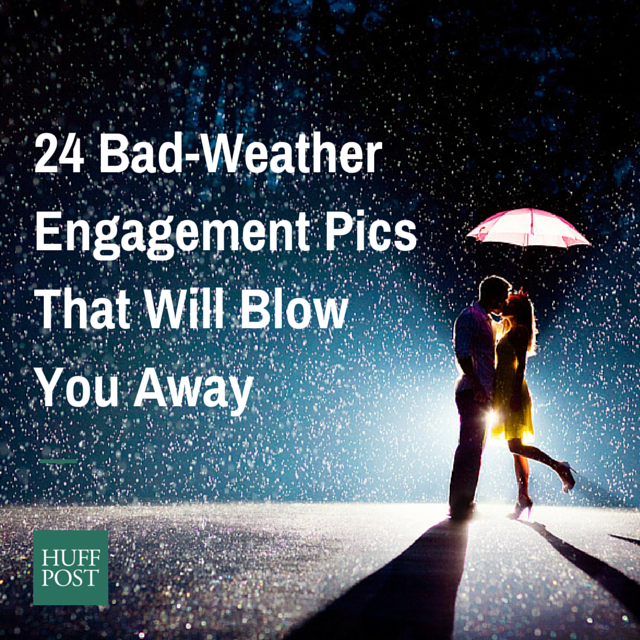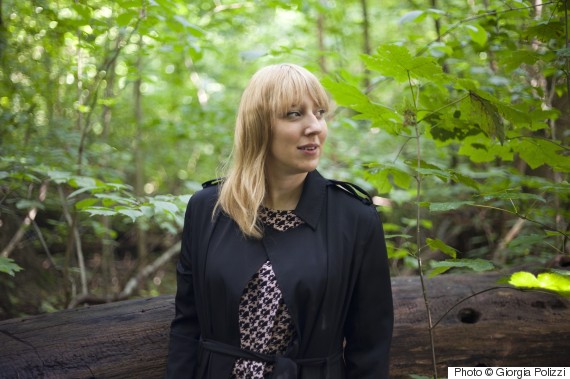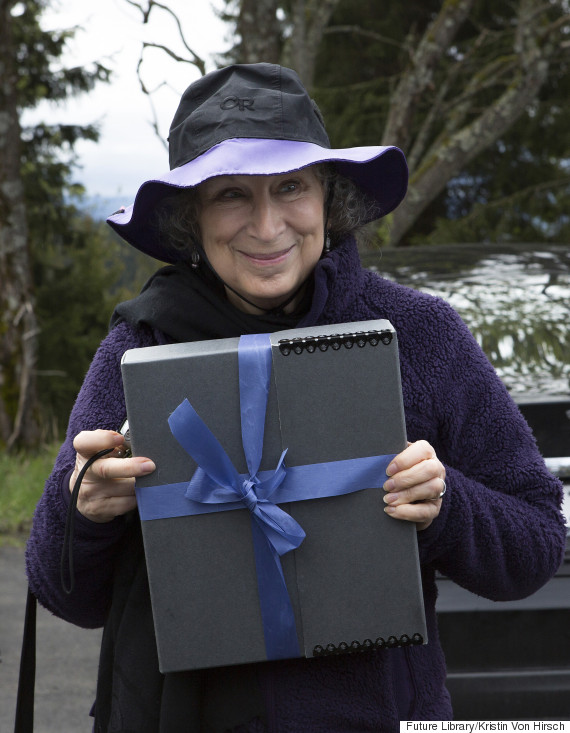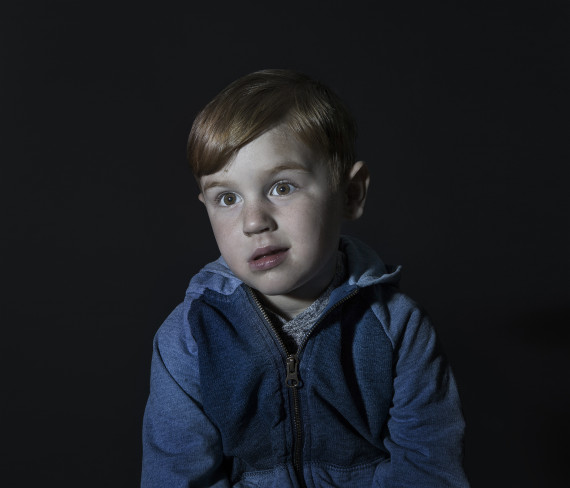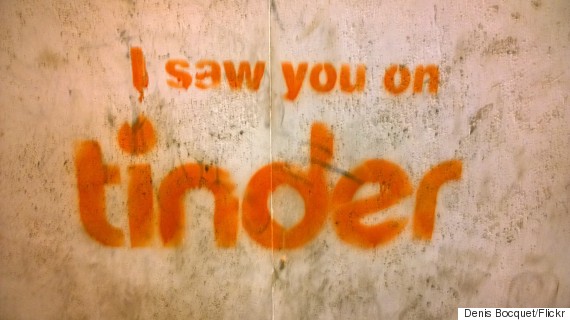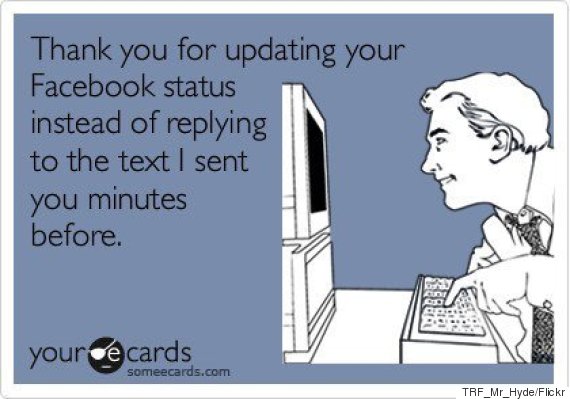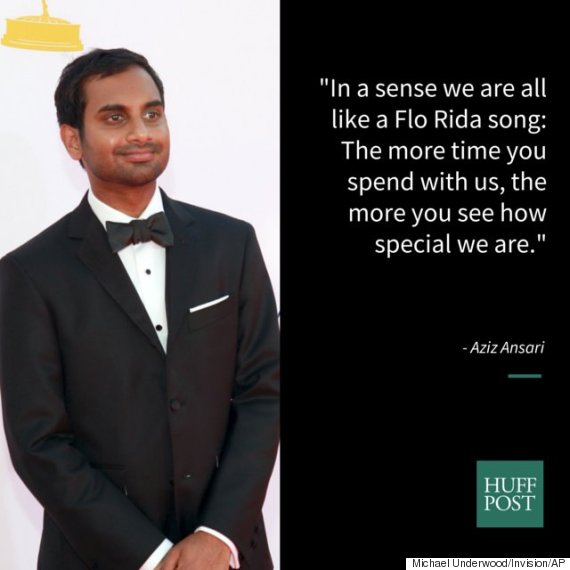Some books are best read at a certain age. Even the novels and memoirs you might consider timeless -- Toni Morrison's
The Bluest Eye or Joan Didion's
The Year of Magical Thinking -- can serve a special purpose if consumed during a particular phase in your life. That particular phase is, of course, your 20s.
The much celebrated, sometimes maligned, decade is an undeniably impressionable one. You've happily exited your teens, slowly freeing yourself of the weighty angst you carried throughout high school. You might have one foot in college and the other in a career, even if you're well beyond graduation, nestled comfortably in a new job -- maybe even a relationship. But you're probably not settled -- financially, emotionally, spiritually, artistically. You're aching for a philosophy, for a template for adulthood; anything that will anchor your constantly evolving life to solid ground.
Cue the 30 books you should read before you turn 30! From Alice Munro to Ralph Ellison, these are the books that are best read in your 20s, when you're restless and hungry for new ideas. Whether you're just starting the decade or about to leave it, you've still got time to put a dent in this literary bucket list. Enjoy:
1. Lives of Girls and Women, Alice Munro
At long last, Munro’s short stories have been given their due acknowledgment as some of the best crafted by a living writer. Her characters are humble, witty, relatable; her tales read like conversations with an old, self-aware friend. Her novel, too, is among the best coming-of-age stories. Following young Del Jordan on adolescent adventures with her Encyclopedia-selling mother and her best friend Naomi, the interwoven tales are set in a small town, but will remind almost any reader of their own first encounters with isolation, lust and ambition.
-Maddie Crum
![munro]() 2. To the Lighthouse, Virginia Woolf
2. To the Lighthouse, Virginia Woolf
In this hauntingly elegiac book, Woolf evokes the painful inevitability of time’s passage. The Ramsays are enjoying a summer on the Isle of Skye; the children, husband and guests are all effortlessly entertained by the bewitching Mrs. Ramsay. Time passes, and we revisit the house, but it’s empty and left open to the elements. Losses have been suffered that could not have been foreseen in the idyllic days documented in the first section.
To the Lighthouse captures the agony of loss contained in growing up, and reminds us all, hopefully, to be grateful for the blessings we may often overlook when we’re feeling young and invincible.
-Claire Fallon
![lightouse]() 3. The Year of Magical Thinking, Joan Didion
3. The Year of Magical Thinking, Joan Didion
Didion's memoir begins when, one evening, just before dinner, her husband unexpectedly suffers a heart attack and dies. What follows is an honest and impassioned story of the author's first year without him, from the fallacious thoughts saying he'll return, to the small daily rituals that will never be the same. Grief is not often talked about in detail, but this book captures its essence.
-Priscilla Frank
![did]() 4. In Persuasion Nation, George Saunders
4. In Persuasion Nation, George Saunders
Saunders packages together satire and sci-fi so adeptly, in short and digestible spurts, approaching everything from contagion to commercialism. And he doesn’t shy away from the horrific future he seems to feel is just a stone’s throw from our own era. It’s a dose of unreality everyone under 30 (and over, for that matter) should experience.
-Katherine Brooks
![saunders]() 5. Ulysses, James Joyce
5. Ulysses, James Joyce
This hefty, heady masterpiece about a single day in Dublin revolutionized the modernist literary scene. Read it to ruminate on perception, to relate to the father-searching angst of young artist Stephen Dedalus, or just to remember how much you experience in 24 hours. Investing in a companion book (or college course) would not go amiss.
-Colton Valentine
![ulysses]() 6. The Corrections, Jonathan Franzen
6. The Corrections, Jonathan Franzen
Ah, the catastrophic voyage from youth to adulthood. Nobody seems to capture it as accurately, if sarcastically, as Franzen. Three siblings each attempt to navigate the rough waters beyond their hometown, where things aren’t so stable lately, either. Egotistical middle kid Chip has dismayingly been barred from academia; career-driven Denise is caught up in affair (or two); seemingly stable Gary has been feeling drearier than his pristine home will have you believe. At the very least,
The Corrections is a smart, funny break from your own quarter-life or midlife crisis.
-Maddie Crum
![corrections]() 7. Middlemarch, George Eliot
7. Middlemarch, George Eliot
Eliot’s great gift as a novelist was her breadth of empathy, which stretched wide enough to cover spoiled society brats and humble farmers alike. In Middlemarch, we see the emotional education of a varied cast of young people -- naively idealistic Dorothea, selfish Rosamond, ambitious Dr. Lydgate, goodhearted rake Fred Vincy, and more -- as they take the first steps toward shaping the rest of their lives. Eliot deftly impresses on readers the need for personal maturation, and the possible consequences of making poor choices early in life, but all with a warm understanding that acts as a balm to those of us still struggling toward adulthood.
-Claire Fallon
![eliot]() 8. The Sabbath, AJ Heschel
8. The Sabbath, AJ Heschel
Heschel's compact gem explores the history and significance of the Jewish tradition of Shabbat. Yet even for the non-religious reader, the book offers a gripping and timely meditation on the holiness of time, as relevant as ever in today's space-dominated world. Whether or not you're practicing or Jewish at all, this book will show the immense import of a day of rest.
-Priscilla Frank
![sabbath]() 9. A Little Life, Hanya Yanagihara
9. A Little Life, Hanya Yanagihara
On the surface, Yanagihara’s prose follows four friends fresh out of university, fitted with romanticized character arcs that intersect and detach in familiar, post-collegiate ways. But beyond the glamour of making it to -- and flourishing within -- the fantasy world that is Manhattan, the author picks away at our ability to understand grief and depression, challenging the reader to be more and more empathetic. And your 20s is a better time than any to hone the oft-overlooked trait of empathy. (Bonus: The books is physically hefty at over 700 pages, but ravenously readable.)
-Katherine Brooks
![life]() 10. The Bluest Eye, Toni Morrison
10. The Bluest Eye, Toni Morrison
A wake-up call for any young adult on how race and gender burrow deeply into (adolescent) psychology. The novel’s treatment of endemic prejudice is frighteningly applicable to 2015, and it hones your ability to pick apart the ways that prejudice manifests in our supposedly pure sense of beauty. At the same time, Morrison manages to coat even the most appalling actions in impossibility gorgeous words. Her style is purple prose done to perfection.
-Colton Valentine
![41]() 11. My Brilliant Friend, Elena Ferrante
11. My Brilliant Friend, Elena Ferrante
The first in a mysterious Italian author’s series about the intertwined lives of two female friends, this novel not only brings to life the pleasures and difficulties of intimacy, but also the stubborn nature of fate. As narrator Elena and her childhood comrade Lila attempt to escape the violent, patriarchal strictures of Neapolitan life through education and romance respectively, they learn that doing so would require much more than objective success.
-Maddie Crum
![elena]() 12. White Teeth, Zadie Smith
White Teeth
12. White Teeth, Zadie Smith
White Teeth crosses generations, following two war buddies, Archie Jones and Samad Iqbal, and the cultural struggles faced by them and their families in a rapidly changing England. Jones’ biracial, brilliant daughter and Iqbal’s rebellious sons form close friendships and blossom in different strengths, but their paths to adulthood are strewn with pitfalls -- like a profound longing for acceptance that any young person, and any immigrant, can likely relate to. Adolescence is awkward for most of us -- even girls, so often presented as nubile and lovely in art -- and Smith takes the fumbling insecurity, physical self-consciousness and shifting identity and unflinchingly lays it all on the page.
-Claire Fallon
![whiteteeth]() 13. I Love Dick, Chris Kraus
I Love Dick
13. I Love Dick, Chris Kraus
I Love Dick is part diary, part theory, part fiction, part autobiography, part confession, part manifesto. Kraus' story begins when she and her husband embark on the strange, erotic exercise of sending love letters to the man Kraus wants desperately to sleep with. Kraus' book urges women to be exposed, paradoxical, desirous, even destructive -- anything but quiet.
-Priscilla Frank
![dick]() 14. Kurt Vonnegut: Letters, ed. Dan Wakefield
14. Kurt Vonnegut: Letters, ed. Dan Wakefield
Reading a compilation of letters so specific and intimate, spanning decades of one person’s life, gives a 20-something (or me, at least) a sense of the passing of time. Vonnegut’s collected correspondence offers readers a glimpse of the rougher sides of his experience as a professional writer; the balancing game of maintaining relationships with loved ones and friends, colleagues and critics. Most importantly, it proves in one way or another that real life, the stuff of nonfiction, propels forward, even after the most unmanageable moments of anguish.
-Katherine Brooks
![kurt]() 15. The Symposium, Plato
15. The Symposium, Plato
A gorgeous examination of beauty, love, and education told in a series of speeches (“encomia”) by Greeks who become increasingly intoxicated as the night goes on. It’s both a dose of idealism and a reminder to never take anyone, even Plato, too seriously. Recommendation: read in one Starbucks sitting, then walk outside and prepare for transcendence. You might just enter the world of forms.
-Colton Valentine
![plato]() 16. Dept. of Speculation, Jenny Offill
16. Dept. of Speculation, Jenny Offill
On its face, Offill’s slim novel is a sparse reflection on infidelity -- the forces that bring people together, and the forces that wedge them apart. But the author’s magical command of language infuses her story with scientific metaphors, lyrical observations about what it is to be human, and hilarious anecdotes about yoga pants.
-Maddie Crum
![offill]() 17. Invisible Man, Ralph Ellison
17. Invisible Man, Ralph Ellison
Every now and then, you’ll read a book that will pick up your worldview and shake it like a Boggle board, leaving everything in a somewhat different position that before.
Invisible Man is one of those books. And it’s great to shake up your worldview as soon as possible rather than go through your life playing the same letters. (Right?)
Invisible Man excavates the psychological damage inflicted by racism, as well as the economic and physical toll, as its increasingly bitter narrator endures countless betrayals and indignities both in his native South and in Harlem, where he ultimately moves. The unseen trauma festers into a rage that saturates his every fiber, leaving us questioning the structures of our society and the hidden causes of seemingly inexplicable pain.
-Claire Fallon
![ralph]() 18. Americanah, Chimamanda Ngozi Adichie
Americanah
18. Americanah, Chimamanda Ngozi Adichie
Americanah is a love story, following two teenagers in Nigeria as they grow up and leave their country of origin. But more importantly, it's a sharp and raw portrait of contemporary race relations, depicting just how different an experience it is to be African in America and to be an African-American. Adichie's hilarious, sparkling prose make her characters so true to life you'll learn big lessons about relationships and gender dynamics without even trying.
-Priscilla Frank
![americanah]() 19. Everything I Never Told You, Celeste Ng
19. Everything I Never Told You, Celeste Ng
In the moment, Ng’s book is a thriller, one that tells the story of a high-school girl’s abrupt death amidst the rumor mill of a 1970s-era college town in Ohio. The story lingers as a familial portrait, though, one that reflects on the roles our parents, siblings and children reluctantly play in order to keep the nuclear unit afloat -- and the impact of the secrets we all keep from each other. While the novel is just over 300 pages, it packs a punch, spanning the early murmurs of feminism as well as the racial biases of 20th-century White America. Overall, it’s a stunning glimpse into the generation that preceded Millennials.
-Katherine Brooks
![everything]() 20. Midnight’s Children, Salman Rushdie
20. Midnight’s Children, Salman Rushdie
"To understand just one life you have to swallow the world,” says protagonist Saleem Sinai. The novel charts a group of children endowed with magical powers who were born just before midnight on the eve of India and Pakistan’s division. Its scope is massive -- reaching through generations and decades of political intrigue -- but it focuses the telling of history in the tragedy of individual lives. Rushdie’s novel is an exceptional introduction to postcolonial writing. It asks us why we tell stories the way we do, and then proposes a some fantastical alternatives. Be prepared to swallow its world.
-Colton Valentine
![salman]() 21. The Sense of an Ending, Julian Barnes
21. The Sense of an Ending, Julian Barnes
Barnes’s Booker-winning novel is a short, emotionally demanding read about nostalgia, and how we process and make sense of our wending memories. Middle-aged protagonist Tony has allowed himself to become comfortable with his life as a cordial divorced man, until an unexpected letter forces him to rethink his friendships of yore, especially his connection with the intellectually serious Adrian Finn. In doing so, Tony -- and Barnes -- sheds light on the relative nature of time, and how we determine what we value most.
-Maddie Crum
![barnes]() 22. Housekeeping, Marilynne Robinson
22. Housekeeping, Marilynne Robinson
Every reading list should have some Robinson on it. The pre-30 years are a particularly apt time to read
Housekeeping, her first novel and the only one not set in Gilead, Iowa. The tale is narrated by Ruthie, a young girl who, along with her sister Lucille, is left with an itinerant aunt after their mother takes her own life. An aura of the uncanny hovers over the lives of the threesome, as their aunt struggles to stay in town to care for the girls despite her wanderlust and obvious disconnect from society.
Housekeeping makes vivid a sense of displacement and identity confusion that will cut right to your soul.
-Claire Fallon
![house]() 23. Delta of Venus, Anais Nin
23. Delta of Venus, Anais Nin
Nin's collection of short erotica is one of the first from a female perspective. They were originally written for a private collector, who directed Nin to leave out the poetic language and focus on the sex. However, Nin's evocative voice sparkles throughout in the bewitching and nasty tales touching on themes from masculinity to incest.
-Priscilla Frank
![nin]() 24. Lesabéndio: An Asteroid Novel, Paul Scheerbart
24. Lesabéndio: An Asteroid Novel, Paul Scheerbart
Written in 1913,
Lesabéndio is equal parts philosophy and science fiction that mines an eternal debate: what is more valuable, construction in the name of science or creation in the name of art? For those pondering a professional future beyond their humanities educations, Scheerbart weighs the importance of technical discovery, aesthetic progress, and collaboration between artists and scientists. Bonus: Lesabéndio is one of the most original alien characters out there.
-Katherine Brooks
![lesa]() 25. On the Genealogy of Morality, Friedrich Nietzsche
25. On the Genealogy of Morality, Friedrich Nietzsche
Perhaps the most polarizing philosopher on record, Nietzsche outlines a controversial ethical theory that will leave you well-equipped to spar with pseudo-intellectuals. His writings inspired a great deal of 20th-century thought -- and a lot of late-night dorm conversations. So even if you hate him, it’s worth working through his ideas to articulate why. Spoiler: it’s actually far more complicated than “God is dead” nihilism.
-Colton Valentine
![niet]() 26. Leaving the Atocha Station, Ben Lerner
26. Leaving the Atocha Station, Ben Lerner
Lerner, most recently of
10:04 fame, forayed into novel-writing from poem-crafting (much to the delight of story lovers!) with
Leaving the Atocha Station. Narrator Adam is a poet living in Spain on a fellowship, but more than writing he spends his time wandering around museums, smoking, and pursuing women. Comically self-effacing, Adam is restless youth personified. Aware of his flaws and shortcomings but unable to correct them, he instead invites the reader to witness his wanderings and musings firsthand and unfiltered. Lerner manages to make a potentially self-indulgent story a delicate portrayal of youthful idealism.
-Maddie Crum
![lerner]() 27. Persuasion, Jane Austen
27. Persuasion, Jane Austen
If you get to 30 and haven’t read any Austen… well, for shame. One of the creators of the modern novel, Austen isn’t just historically important; she’s acutely observant, laugh-out-loud funny, and full of timeless truths. Any of her major novels would be valuable reading, but don’t miss
Persuasion. Her final completed novel, it lacks some of the vibrant hilarity of her earlier hits but makes up for it with its hopeful spirit. It’s a quiet story of youthful impressionability, living with regret, and finding second chances, full of wisdom for those of us suffering life’s first knocks and looking back on our first big mistakes.
-Claire Fallon
![persuasion]() 28. The Painted Word, Tom Wolfe
28. The Painted Word, Tom Wolfe
If you hate modern art, you will love this book. Even if you love modern art, you'll probably love it. Wolfe's irreverent takedown of art-world bullshit will make you feel so much better about your lukewarm feelings for Damien Hirst. Even if you disagree with Wolfe's overall cranky message, it's the best way to learn a lot about art while also laughing very hard.
-Priscilla Frank
![wolfe]() 29. Girls to the Front, Sara Marcus
29. Girls to the Front, Sara Marcus
Music nerds, assemble. No one should leave their 20s without understanding the impact of riot grrrls on contemporary culture, be it art, music, or feminism in general. Read this book, listen to every band mentioned, and relish in the DIY, “Rebel Girl” ethos of Kathleen Hanna and her ilk.
-Katherine Brooks
![girls]() 30. Waiting for Godot, Samuel Beckett
30. Waiting for Godot, Samuel Beckett
A stark tragicomedy featuring two characters that wait and wait and wait some more. Language and relationships break down, hope fades, and we’re left wondering whether
Godot is a mere symbol for the absence of modern spiritual salvation. Beckett may not offer much hope for your 20-something uncertainty, but at least his work reminds you that the rest of the world is also waiting for something miraculous to happen.
-Colton Valentine
![beckett]() A previous list of books you should read before you turn 30.
A previous list of books you should read before you turn 30.
-- This feed and its contents are the property of The Huffington Post, and use is subject to our terms. It may be used for personal consumption, but may not be distributed on a website.
















